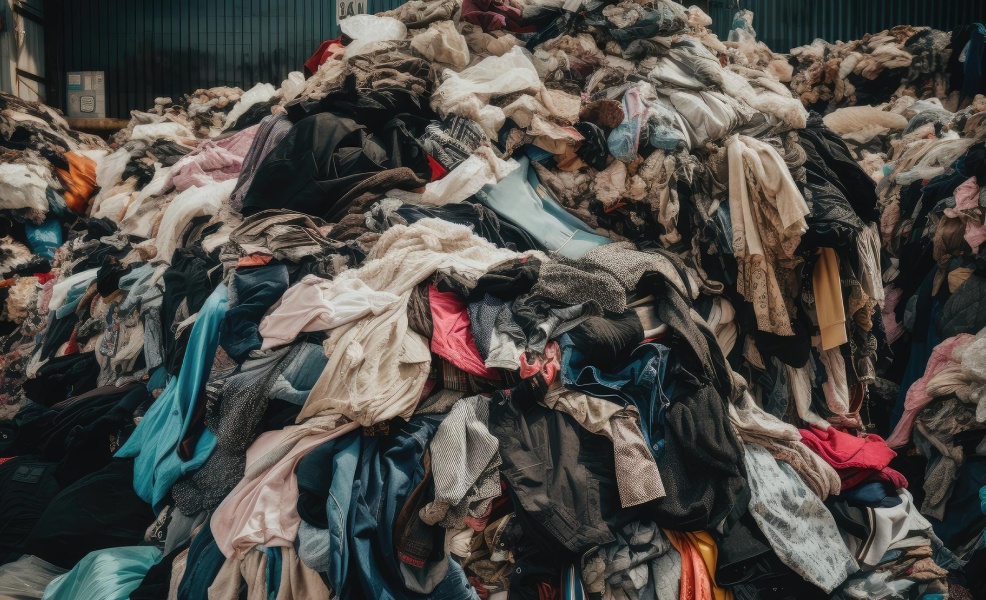Introduction
The textile industry is notorious for its substantial waste generation, which poses significant environmental challenges. However, in recent years, the focus on sustainable practices and circular economy principles has spurred innovative approaches to textile waste management. This blog explores the pressing issue of textile waste and delves into strategies for a greener future. From reducing waste at the source and promoting recycling to encouraging responsible consumer behavior, we will explore the multifaceted solutions that can transform the textile industry into a more sustainable and responsible sector.
The Scope of Textile Waste
Textile waste encompasses various stages, including pre-consumer waste generated during manufacturing and post-consumer waste from discarded garments. The magnitude of the problem is staggering, with millions of tons of textiles ending up in landfills every year. The decomposition of synthetic fibers releases harmful greenhouse gases, exacerbating the environmental impact.
Reducing Waste at the Source
To address the textile waste crisis, reducing waste at the source is crucial. Designers and manufacturers can adopt sustainable practices such as lean manufacturing, where they focus on optimizing production processes, minimizing material waste, and avoiding overproduction. Embracing modular and adaptable design approaches can facilitate easy repair and upcycling, extending the lifespan of garments.
Promoting Textile Recycling
Textile recycling plays a pivotal role in reducing waste and conserving resources. Recycling can take various forms, including mechanical recycling, where textiles are broken down into fibers and used for new products, and chemical recycling, which converts textiles into raw materials for other industries. Establishing efficient collection and sorting systems, as well as investing in advanced recycling technologies, can help improve the viability of textile recycling on a larger scale.
Collaborations and Extended Producer Responsibility
Collaboration among stakeholders is essential to tackling textile waste. Brands can embrace extended producer responsibility (EPR) by taking responsibility for the entire lifecycle of their products, from design to disposal. This involves implementing take-back programs, partnering with recycling facilities, and designing products with recycling in mind. Collaboration between designers, manufacturers, and recycling facilities can promote a closed-loop system, where waste textiles are efficiently collected, sorted, and transformed into new materials.
Consumer Education and Responsible Consumption
Shifting consumer behavior is critical in creating a greener future for the textile industry. Educating consumers about the environmental impact of textile waste and the importance of responsible consumption can drive change. Encouraging actions such as repairing and upcycling clothes, supporting second-hand markets, and choosing durable, quality garments over fast fashion can significantly reduce textile waste. Renting and swapping platforms, as well as clothing libraries, can provide sustainable alternatives for accessing fashion without contributing to waste accumulation.
Innovations and Emerging Technologies
Innovative technologies offer promising solutions for textile waste management. For instance, the development of enzymatic processes can facilitate efficient breakdown and recycling of blended fabrics. Nanotechnology advancements can enhance the recyclability and performance of textile materials. Furthermore, 3D printing holds the potential to minimize waste by enabling precise and on-demand manufacturing. Embracing these technological innovations can pave the way for a more sustainable and efficient textile industry.
Policy and Regulation
Government policies and regulations play a crucial role in driving sustainable practices and waste reduction in the textile industry. Implementing policies that encourage extended producer responsibility, promote recycling infrastructure, and establish waste reduction targets can create a supportive framework for greener textile practices. Collaborations between governments, industry stakeholders, and environmental organizations can lead to the development of comprehensive policies that address textile waste management at a systemic level.
Conclusion
Textile waste management is a pressing issue that requires a comprehensive and collaborative approach. By adopting strategies that reduce waste at the source, promote recycling, educate consumers, and leverage innovative technologies, the textile industry can move towards a greener future. A circular economy approach, where textiles are kept in circulation for as long as possible through recycling and responsible consumption, offers a viable solution. With the concerted efforts of designers, manufacturers, consumers, and policymakers, a more sustainable and responsible textile industry can emerge, reducing waste and minimizing the environmental impact for generations to come.

